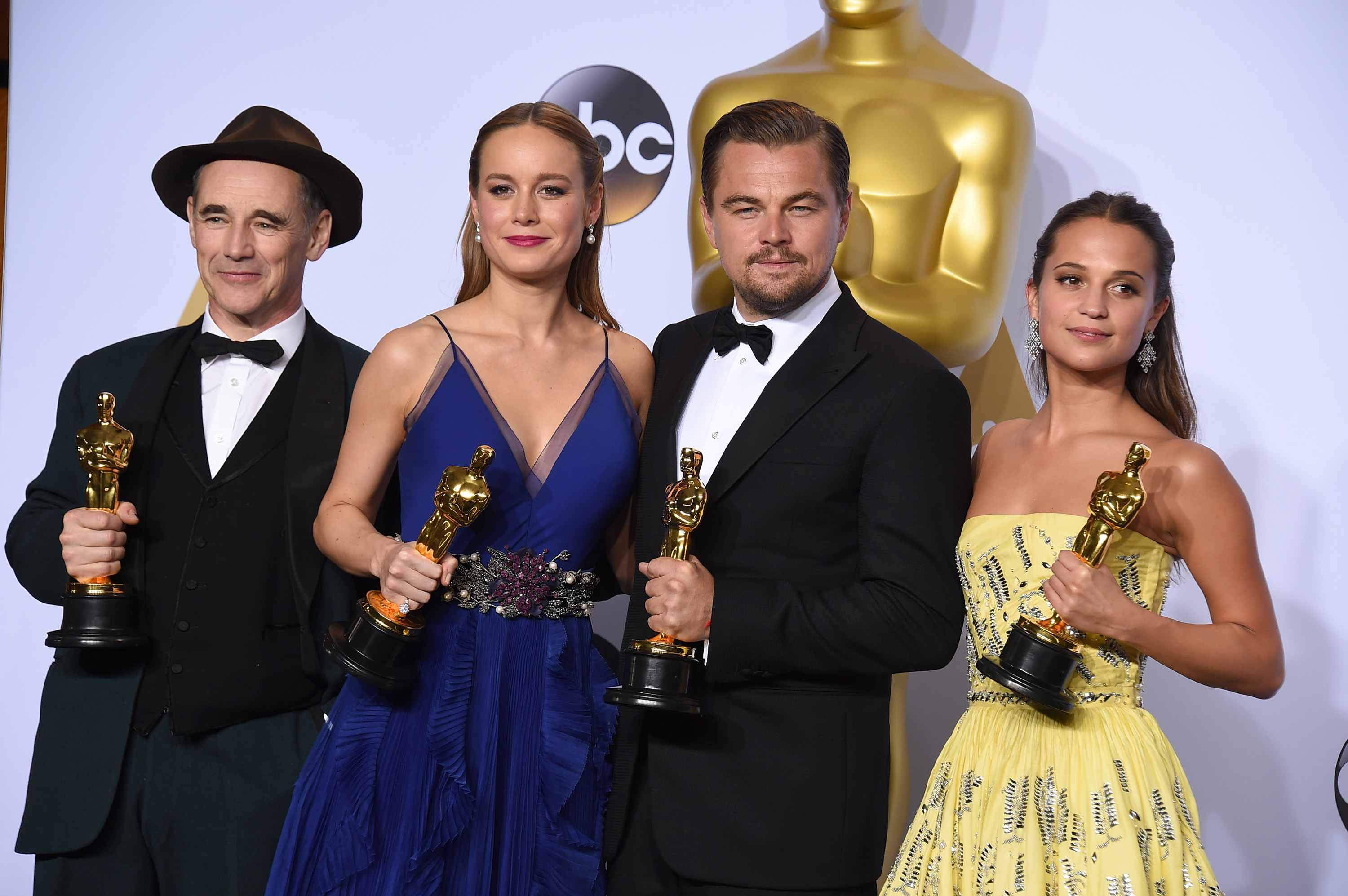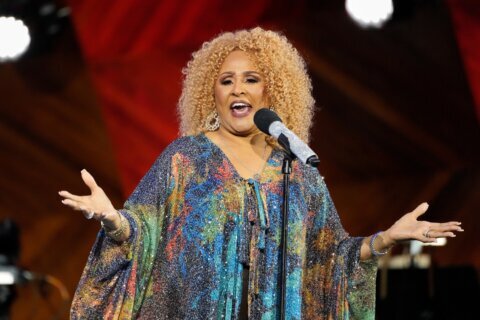LOS ANGELES — Who really cares about the Oscars anyway?
It’s a claim you’ll often hear this time of year, either by snobby academics who feel that Hollywood dumbs down its awards to honor the less experimental movies, or by regular joes who resent elite celebrities patting themselves on the back with golden idols in a telecast that’s way too long.
While these are all valid points, you’re missing the point if this is all you see about the Academy Awards. It’s not about who wore what, who’s dating whom, who tripped on stage, or even who wins or loses, as hindsight history shows the Oscars only get it right about half the time anyway.
The reason I love the Oscars is that it’s the one night every year that our collective culture stops to celebrate the greatest art form mankind ever invented, combining the very best of photography, literature, music and theatre arts to create a new medium we affectionately call the movies.
“I never saw the Academy Awards as a competition. … It’s more a celebration of the craft and art of filmmaking. … I don’t think it should be viewed as a competition because it’s not objective. … It’s very subjective,” Mexican cinematographer Emmanuel Lubezki said backstage after winning his third straight cinematography Oscar after “Gravity” (2013), “Birdman” (2014) and “The Revenant” (2015).
It was with this celebratory mindset that I headed to Hollywood to see the ordeal for myself.
I booked a swanky room at the Culver Hotel, where Judy Garland chilled at night and the Munchkins stayed while shooting “The Wizard of Oz” (1939) a few blocks down the road.
Just kidding.
I actually crashed on the couch of some grad school friends (thanks Steve and Maria!) located on a suburban-style street of Culver City within walking distance of Sony Pictures (the old MGM Studios) and Culver Studios (the old Selznick International Pictures, RKO Pictures and Desilu Studios).
The former offered a guided tour of the “Wheel of Fortune” and “Jeopardy” sets, the Barbra Streisand Scoring Stage where orchestras recorded music for “Lawrence of Arabia” (1962) and “E.T.” (1982) and Stage 27 where “Oz” was shot (rumors are the Yellow Brick Road is still underneath).
The latter doesn’t offer official tours, but if a young Steven Spielberg can sneak onto the Universal Studios lot, surely this guy could take an (alleged) self-guided tour of the exact stages of “King Kong” (1933), “Gone With the Wind” (1939), “Citizen Kane” (1941) and “It’s a Wonderful Life” (1946).
Sometimes childhood dreams are undeterred by the “No Trespassing” sign at the gates of Xanadu.
Likewise, the rest of the trip involved Uber rides to other famous film locations, from the Chinatown street where Faye Dunaway drove away from Jack Nicholson in “Chinatown” (1974) to the Griffith Observatory where James Dean romanced Natalie Wood in “Rebel Without a Cause” (1955).
The view of the Hollywood Hills skyline rivaled anything I saw along Santa Monica or Sunset Blvd, and certainly topped “tourist central” of Hollywood Boulevard, the Times Square of Los Angeles.
Which brings us to the big night, Oscar Sunday, kicked off by a red carpet ropeline that brings out the worst of what this business has to offer, the drunken decadence, the flashbulb fury and the paparazzi impulses that Fellini tried to warn us about in “La Dolce Vita” (1960). Thankfully, peppered between the tabloid trash were shining human moments: like the crowd chanting “Rocky” as Sylvester Stallone flashed a thumbs up or Brie Larson waving just before her life-changing honor.
After tweeting a flurry of photos, I hustled backstage to the Dolby Theater press room where no photos were permitted other than the official ABC television feed. Here, roughly 100 reporters sat with their laptops and video/radio equipment in a banquet hall, holding up numbered placards in hopes of being called on to ask the winners questions as they took the podium holding their Oscars.
As the live feed of the telecast was dwarfed by audio from the winners’ room, I came to realize one thing: sometimes you have to go to the Oscars…to not be able to watch the Oscars. If this is your Super Bowl, you’re better off watching from home. The winners room isn’t the place to see the show.
Still, the backstage access came with plenty of perks as the press welcomed the winners. The biggest gasp came when Mark Rylance upset Stallone for Supporting Actor, the biggest smile came when “Spotlight” won Best Picture (I was one of the few in the room to predict it), and the biggest cheer came when fan favorite Leonardo DiCaprio finally won his long elusive Oscar for “The Revenant.”
As Leo came through the curtain to embrace Kate Winslet, it was a surreal “full circle” moment, as the very first Oscars I ever remember watching was the year “Titanic” (1997) swept a record 11 Academy Awards — tied with “Ben-Hur” (1959) and “Lord of the Rings: Return of the King” (2003) — including Best Picture and Best Director for James Cameron and Best Score for the late James Horner.
But while Cameron shouted, “I’m the king of the world” at the time, my teenage self found it odd that Kate was left empty-handed and Leo wasn’t even nominated. Were Jack & Rose doomed? Over the next decade, we saw Kate win her Oscar alongside a double Golden Globe for “The Reader” (2008) and “Revolutionary Road” (2008), where co-star DiCaprio was once again left on the sidelines.
Even when Martin Scorsese won his long overdue Oscar for “The Departed” (2006), DiCaprio was not yet deemed worthy despite becoming Marty’s favorite collaborator for the 21st century just as Robert DeNiro was his masterful muse throughout the latter part of the 20th century.
Suddenly, it all made sense why such a cheer erupted backstage for DiCaprio’s win. It wasn’t that “The Revenant” was that amazing a film, it was that an entire generation of moviegoers had grown up watching his underdog transformation from a discounted heartthrob to respected Oscar winner.
“I grew up in east Los Angeles. I was very close to the Hollywood studio system, but I felt detached from it my whole life. And to have had parents who have allowed me to be a part of this industry, to take me on auditions every day after school and to tell stories like this has been my dream ever since I was four years old. … This is a journey I’ll never forget,” DiCaprio said backstage.
As he said those words, I thought of all the kids who don’t get that shot due to a lack of encouraging parents or a lack of parents altogether — and rise to the top despite it all anyway. It was this theme of opportunity — and lack thereof — that created the odd cloud hanging over this year’s awards.
It figures my first Oscar experience wouldn’t be a rosy trip down the Walk of Fame, but rather a historic encounter with a legit sociological controversy where Spike Lee, Will Smith and others boycotted the ceremony due to a lack of African-American nominees. Outside the Kodak Theatre, one protestor shouted, “F*** the Oscars,” while another told the tux-clad guests: “You’re the enemy.”
As I watched my all-time favorite comedian Chris Rock roast the recent #OscarsSoWhite diversity controversy, I contemplated the fine line of activism. I thought of the folks like Spike and Will who didn’t show, and those like Whoopi Goldberg, Louis Gossett Jr., Kerry Washington and Morgan Freeman who did. I have no idea who “did the right thing” — to follow the Muhammad Ali model of boycotting Vietnam, or the Jesse Owens model of showing up anyway to send a message.
All I know is my own life experience, which tells me the boycott will earn kudos from crusaders inside the Capitol Beltway, but which will earn eye rolls by folks in my rural hometown who don’t get the controversy in light of the recent Oscar dominance of “12 Years a Slave.” I know exactly how this will play out. Instead of my family and friends being introduced to Spike’s masterful work in a Life Achievement montage and speech, they’ll be turned off from ever wanting to explore his career.
This is an absolute tragedy, a “failure to communicate” of epic proportions.
Mexican filmmaker Alejandro Gonzalez Iñárritu vented this frustration backstage after winning his second straight Best Director after “Birdman” and “Revenant.” Asked by a reporter about the diversity controversy, he seemed annoyed to still be talking about racial divisions in the year 2016.
“The debate is not only about black and white people. I think diversity really includes (everyone). What does that mean? That now #OscarsSoBrown? We are yellow and Native Americans and Latin Americans, so the complexity of the society is much more than one or the other. It’s becoming very polarized, very politicized. … There is no moderate platforms to talk about something deeply.”
Iñárritu added that we as a collective people need to move forward together.
“That we are still dragging those prejudices and tribal thinking at this time, it seems to me absolutely absurd. In the ’50s, I remember the people that had long hair, The Beatles, were considered, ‘Oh my god!’ That was so stupid that now we laugh about it. Why we cannot get rid of those prejudices about the color of the skin? It’s completely irrelevant,” Inarritu said.
Just like that, Hollywood, for all its flaws, had provided a mouthpiece for a Mexican filmmaker who traveled here just like Alfred Hitchcock from England, Billy Wilder from Austria, Ernst Lubitsch from Germany, Ang Lee from Taiwan or George Miller from Australia. Here in the California sun, they told important stories from different perspectives, just like the white Oakland native George Stevens.
It was Stevens’ epic “Giant” (1956) that masterfully explored American race, gender and class, examining the relationship between Texans and Latinos along the Texas-Mexico border long before campaign talk of building walls and #OscarsSoWhite hashtags.
Wouldn’t you know it? It was this movie that I found playing on Turner Classic Movies as I stumbled into the Roosevelt Hotel bar across from the Dolby Theatre and Grauman’s Chinese Theater.
Sipping my cup of coffee and watching “Giant” on the flat-screen above the bar, it not only confirmed my belief that the forward-looking film is categorically better than the backward-looking “Gone with the Wind,” but also reaffirmed my belief in the power of cinema. Watching Elizabeth Taylor, Rock Hudson and James Dean on screen with the sound muted, Stevens put on a masterclass of visual storytelling using light and shadow, shot size and symbolic foreground and background images.
With a nostalgic cinematic smile, I thought of two quotes, one personal and one professional.
The first was by Stevens’ son, George Stevens Jr., founder of the American Film Institute, who signed my copy of his book “Conversations with the Great Moviemakers of Hollywood’s Golden Age” with the generous note: “To Jason, May your love and knowledge of film take you to good places.”
The second was by Iñárritu backstage, having directed our beloved Leo to Oscar’s promised land:
“Life is so uncontrollable. It’s impermanent, everything. I think storytelling is a way for us to confront a huge amount of emotions and possibilities, to feel beautiful and horrible emotions but always in a way being in a comfort zone knowing it’s another story that can teach us a lot. It’s a way to control life. To have an oxygen capsule of life without suffering for real that can teach us for when the time comes for being in love or if we have a problem. … Storytelling is oxygen for life that protects us.”
Breathe easy, filmgoers. We’ll always have the movies.
But then again, who really cares about the Oscars?
Why listen to WTOP movie reviews throughout the year? Predictions often become premonitions:








